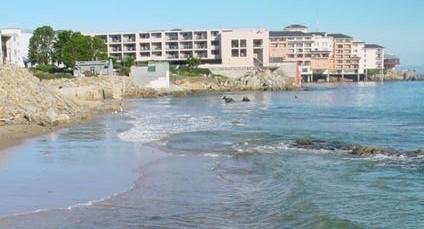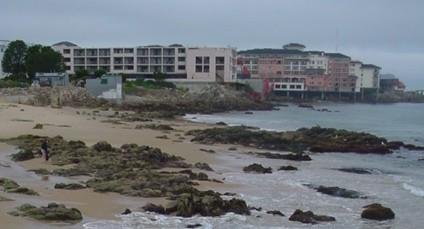Tides

During high tide, more rocks are submerged.

During low tide, more rocks are exposed.
If you observe the ocean's coastline for several hours, you'll notice that the water level changes over time. These changes are called tides, and are the result of the gravitational pull of the moon, and to a smaller extent, the sun. In most areas of the world, the tidal changes are only a few feet, but depending on the geographic location, can be as much as 5 feet in either direction.
Tides affect divers by exposing or concealing rocks that are at or near the water's surface. For example, a low tide may expose rocks that make the entry and exit hazardous, but when the tide rises, these rocks may be completely submerged and safe to swim over.
Tide charts are available that tell you the time of each day's high and low tide, as well as the water level at each tide. These are available at many dive shops, and are also printed in most newspapers.
Tides affect divers by exposing or concealing rocks that are at or near the water's surface. For example, a low tide may expose rocks that make the entry and exit hazardous, but when the tide rises, these rocks may be completely submerged and safe to swim over.
Tide charts are available that tell you the time of each day's high and low tide, as well as the water level at each tide. These are available at many dive shops, and are also printed in most newspapers.



